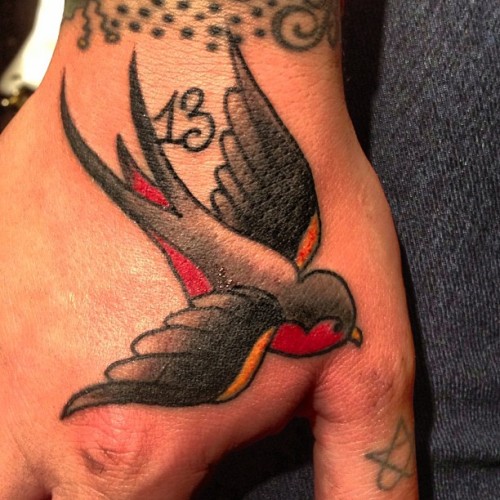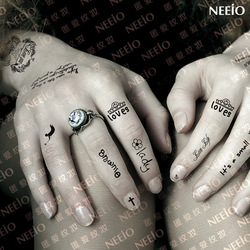Female Hand Tattoos Biography
Source:- Google.com.pk
Standing sentinel in the frozen waters of Bering Sea, St. Lawrence Island fosters a complex of remarkable tattooing traditions spanning 2000 years. Ancient maritime peoples from Asia first colonized this windswept outpost lured by vast herds of ivory-bearing walrus and other sea-mammals. Bringing with them new advances in hunting technology and material culture, the Old Bering Sea/Okvik and Punuk peoples quickly adapted to their insular environment. As the forces of nature were quite often difficult to master, they developed an intricate religion centered on animism. Appeasing their gods through sacrifice and ritual, these mariners attempted to harness their forbidding world by satisfying the spiritual entities that controlled it. Not surprisingly, tattooing became a powerful tool in these efforts: for at once the pigment was laid upon the skin, the indelible mark served as both protective shield and sacrifice to the supernatural.
Facial tattooing of a St. Lawrence Island woman, 1997In the last century, however, tattoo on St. Lawrence Island, and more generally the Arctic, has been a dying, if not already dead, traditional practice. Disruptions to native society as a result of disease, missionization, and modernity paved the way for a relinquishing of ancient customs. For example, fewer than ten St. Lawrence Yupiget retain traditional tattoos: all date from the 1920's. Alice Yavaseuk (age 96) was the last living tattoo artist and designer. However, she passed away unexpectedly in the fall of 2002. Thus, any student of tattooing must work with tidbits of information to unravel the vast complexities of a fast disappearing "magical art. "
This essay focuses upon a comparative analysis of tattooing practices among the St. Lawrence Island Yupiget, the Inuit peoples of Alaska, Canada, Greenland, and tattooed mummies from Europe and Asia. While often dismissed as a somewhat "mystical" and "incomprehensible" aesthetic, Arctic tattoo was a lived symbol of common participation in the cyclical and subsistence culture of the arctic hunter-gatherer. Tattoo recorded the "biographies" of personhood, reflecting individual and social experience through an array of significant relationships that oscillated between the poles of masculine and feminine, human and animal, sickness and health, the living and the dead. Arguably, tattoos provided a nexus between the individual and communally defined forces that shaped Inuit and Yupiget perceptions of existence..
Archaeological evidence in the form of a carved human figurine demonstrates that tattooing was practiced as early as 3500 years ago in the Arctic. Moreover, the remains of several mummies discovered in Bering Strait and Greenland indicate that tattooing was an element basic to ancient traditions. This is corroborated in mythology since the origin of tattooing is clearly associated with the creation of the sun and moon. The naturalist Lucien M. Turner, speaking of the Fort-Chimo Inuit of Quebec, wrote in 1887:
"The sun is supposed to be a woman. The moon is a man and the brother of the woman who is the sun. She was accustomed to lie on her bed in the house [of her parents] and was finally visited during the night by a man whom she could never discover the identity. She determined to ascertain who it was and in order to do so blackened her nipples with a mixture of oil and lampblack. She was visited again and when the man applied his lips to her breast they became black. The next morning she discovered to her horror that her own brother had the mark on his lips. Her emoternation knew no bounds and her parents discovered her agitation and made These Canadian Inuit were kidnapped by French sailors in 1566. (Notice the tattoos that appear on the woman's face.) This woodblock print is the oldest known European depiction of Eskimos drawn from life. her reveal the cause. The parents were so indignant that they upbraided them and the girl in her shame fled from the village at night. As she ran past the fire she seized an ember and fled beyond the earth. Her brother pursued her and so the sparks fell from the torch [and] they became the stars in the sky. The brother pursued her but is able to overtake her except on rare occasions. These occasions are eclipses. When the moon wanes from sight the brother is supposed to be hiding for the approach of his sister."
Female Hand Tattoos For Girls For Women Tumble Words Quotes For Men Design Designs Writing


Female Hand Tattoos For Girls For Women Tumble Words Quotes For Men Design Designs Writing


Female Hand Tattoos For Girls For Women Tumble Words Quotes For Men Design Designs Writing


Female Hand Tattoos For Girls For Women Tumble Words Quotes For Men Design Designs Writing


Female Hand Tattoos For Girls For Women Tumble Words Quotes For Men Design Designs Writing


Female Hand Tattoos For Girls For Women Tumble Words Quotes For Men Design Designs Writing


Female Hand Tattoos For Girls For Women Tumble Words Quotes For Men Design Designs Writing


Female Hand Tattoos For Girls For Women Tumble Words Quotes For Men Design Designs Writing


Female Hand Tattoos For Girls For Women Tumble Words Quotes For Men Design Designs Writing


Female Hand Tattoos For Girls For Women Tumble Words Quotes For Men Design Designs Writing


Female Hand Tattoos For Girls For Women Tumble Words Quotes For Men Design Designs Writing
No comments:
Post a Comment